What capabilities mark out those growing in cultural awareness?
How can we build these characteristics in ourselves, our teams and our organisations?
Cultural awareness might be something that you grew up with or were born into. Perhaps your parents’ decisions, your personal life experiences or the diverse community around you equipped you with a natural bent for easily making friendships from all around the world or from various neighbourhoods across town.
But if not, no matter. It’s never too late to learn.
Cultural awareness, or cultural intelligence (CQ1), can be intentionally developed. We might be looking at an awareness gap in ourselves or those around us, but the great news is that there are areas for purposeful growth to help us bridge it.
What is Cultural Awareness?
We are culturally aware when we can acknowledge that although we have a preferred way of thinking, acting and behaving according to our cultural norms, beliefs and assumptions, this way is not the only way. Nor is it necessarily the only empowering, honourable or right way.
It is less of, ‘my way or the highway,’ and more of, ‘two are better than one; because they have a good reward for their labour.’
Cultural intelligence is not about rejecting our own culture, but rather about seeking to appreciate, understand and welcome the cultural expressions of others while still enjoying our own. And not just the expressions, of course, but the people too.
When it comes to CQ, the result isn’t knowledge, rather the fruit is relationship.
Put bluntly, how capable are we of building relationships with people different to ourselves?
How equipped are our teams and organisations for this?
— Think of a time when a cross cultural connection or friendship surprised, challenged or developed you. What happened? How did it feel? How did you grow?
So how do we grow in Cultural Awareness? What does growth look like?
Let’s get practical. The Culture Intelligence Center marks out 4 capabilities we can develop as we seek to grow cultural intelligence in ourselves and others.
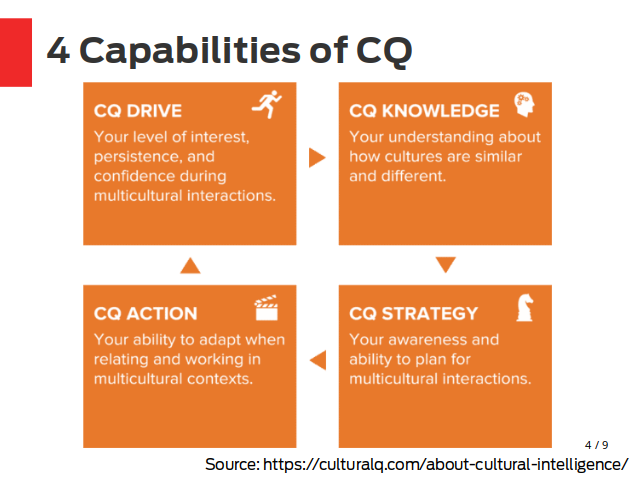
In other words those who grow in cultural awareness are:
- Constantly curious
- Wanting to learn
- Purposeful in planning, and
- Willing to experiment, even when it seems strange, odd or inconvenient.
Take a look at the 4 capabilities. How would you place yourself, your team or your organisation? Where are you already capable? Which capability do you want/need to grow in?
We had heard that it was traditional for people to visit one another at Eid with new clothes, bought for the occasion. We had also heard that hosts gave out chocolates to those who came. We bought a large box of Eid treats and waited, dressed up smartly, house freshly cleaned, to receive guests.
Even though our apartment stairwell rang with shoes on the staircase, no one came to us. We were perplexed and disappointed. What did we do wrong?
A week later our elderly neighbour met us on the stairs. “Why didn’t you come and kiss my hand?” she said. This was our cultural key. It dawned on us that younger people go to visit their elders as a sign of honour. Of course no one had come to us. We were foreign twenty-somethings! Who were we to host her?!
Next Eid we dressed up smartly and visited our neighbour, kissing her hand as we slid on the guest slippers. She beamed delightedly and stuffed us with chocolate and cakes. We had entered in.
– story of young couple relocating to Middle East
Developing CQ capabilities in others, our teams and our organisations involves:
- Creating a space where curiosity is encouraged and where we intentionally build confidence and positivity in those amongst us with little experience of other cultures.
- Teaching and equipping by sharing resources and actively bridging relational connections so our people can grow in knowledge of one another through the sharing of life experiences.
- Introducing new, ‘other-cultural’ ways of doing things into our plans and actions for the future and the manner in which we behave.
- Leading by example as we try things that, although they feel uncomfortable or odd to us, powerfully communicate open-hearted acceptance and belonging to those we have listened to.
What could this look like for you or in your context?
Here are some questions to help you take this further:
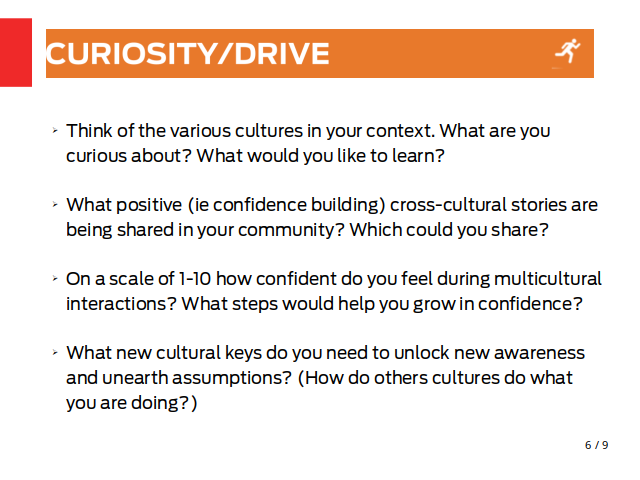
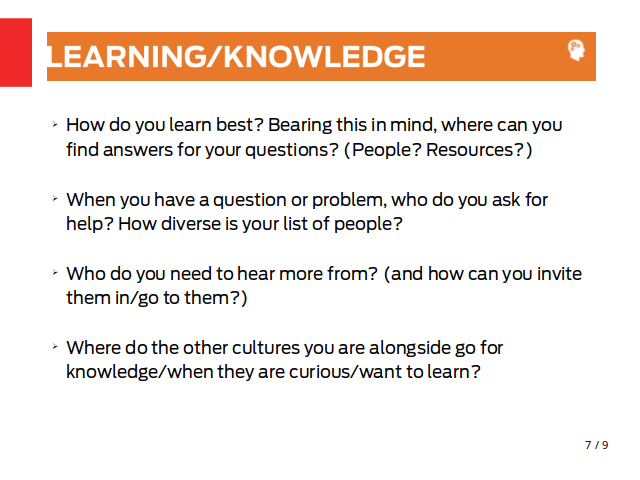
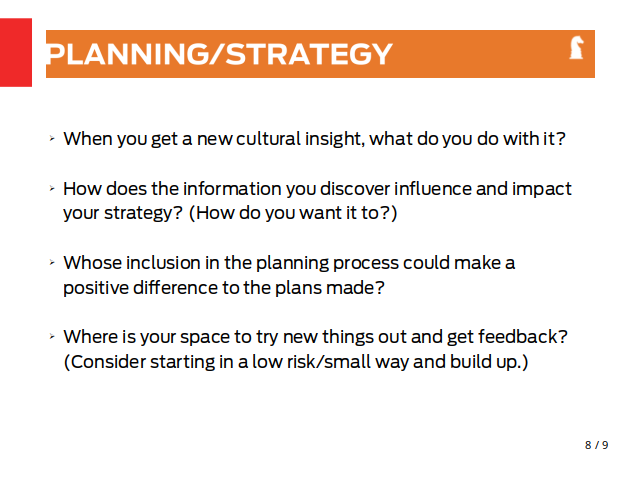
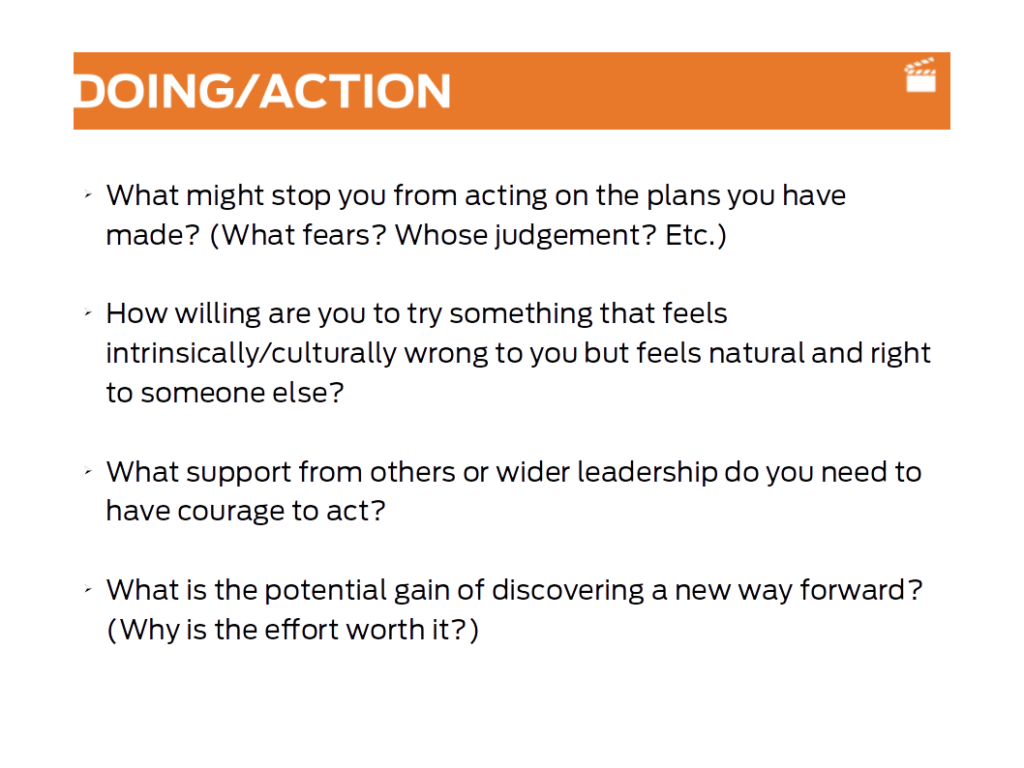
Why is the effort worth it?
Going through all these questions, thinking through all these stages might look like a lot of hard work. It is. Or it can be. Choosing to embrace a multicultural and/or cross-cultural way of living isn’t always easy – if it were, everyone would be doing it!
Ultimately this is about people not principles. Although growing in this way might not be easy, that’s not to say that it can’t be fun. Growing culture-crossing relationships (which is what this is really all about) is enlightening, exciting, enriching, joyful, a total blast, sanctifying, a privilege, an opportunity for discovery and an invitation to so much adventure.
So, what’s your next step for growing in this?
1‘CQ’ abbreviation for Cultural Intelligence sits it in global development conversations with IQ (Intelligence Quotient) and Emotional Intelligence (‘EQ’).
Top photo by Ave Calvar on Unsplash
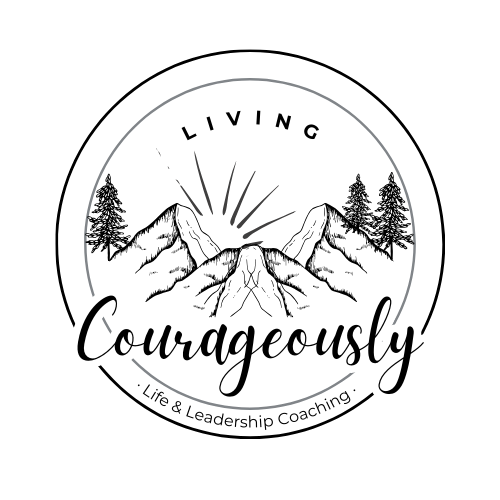

Leave a Reply